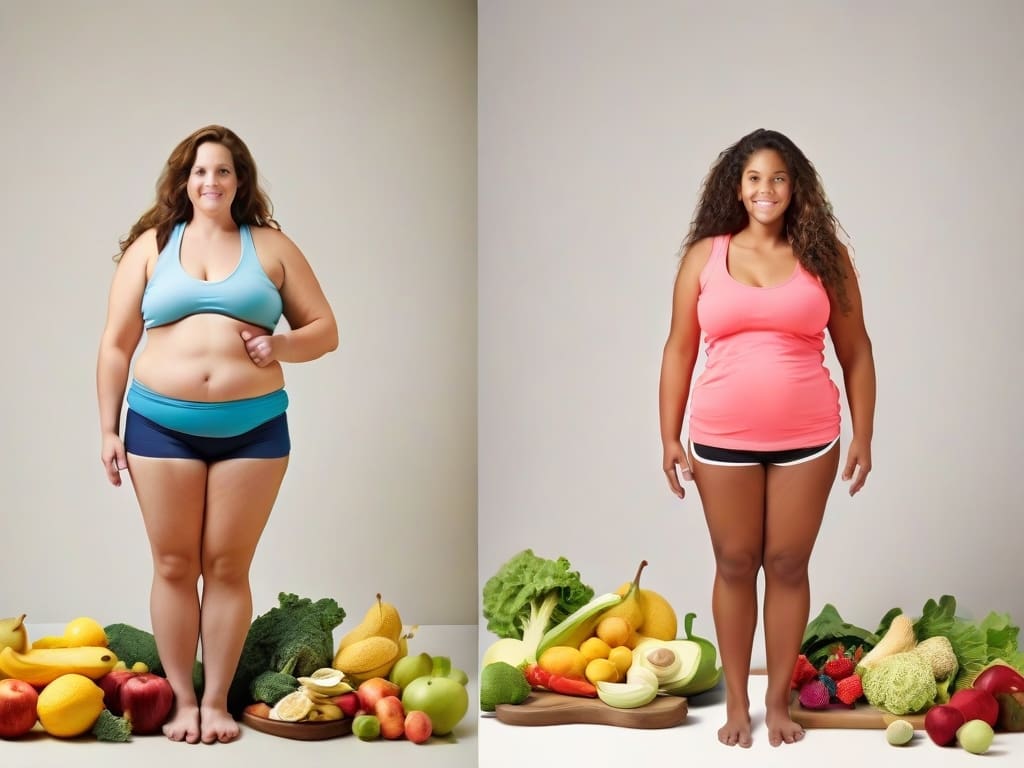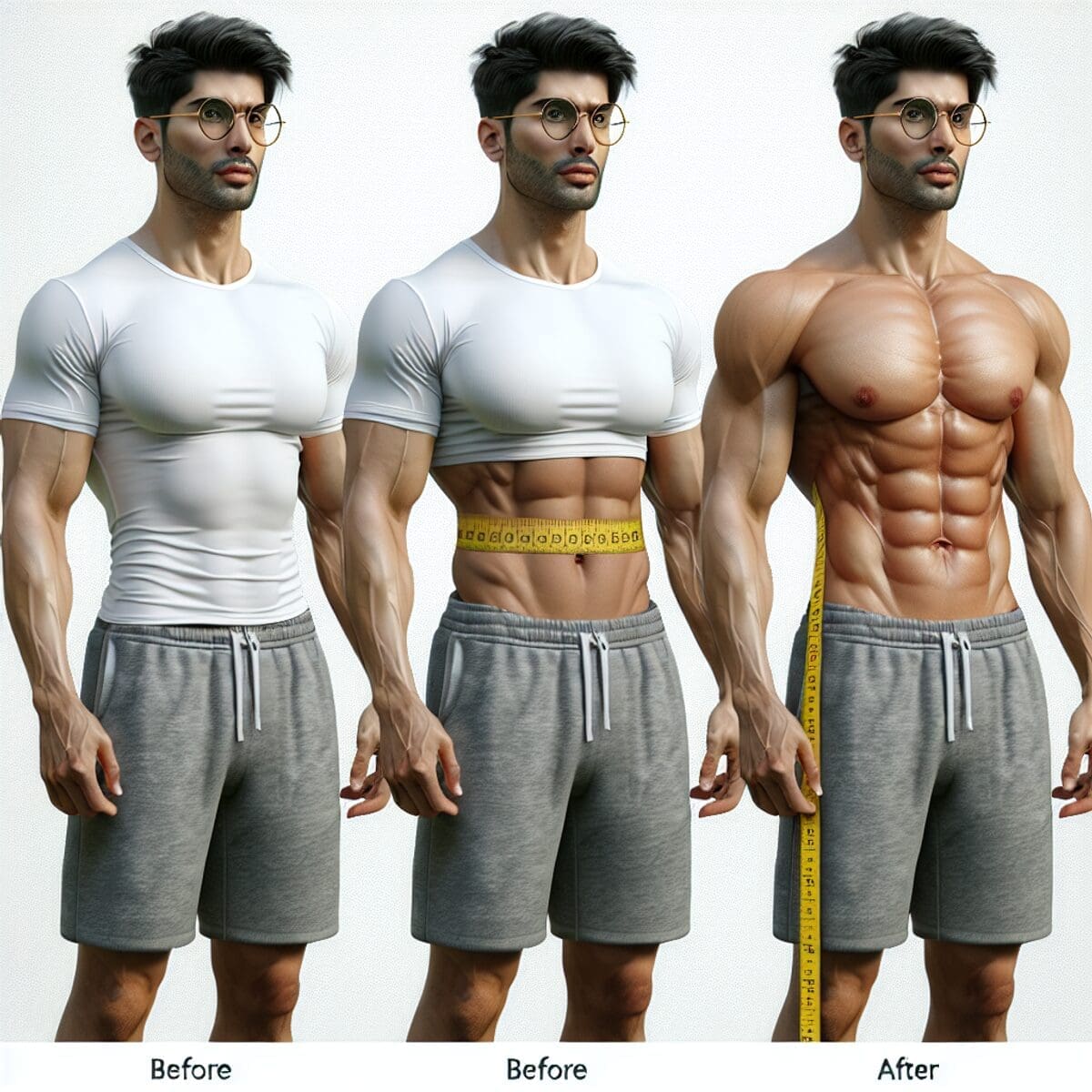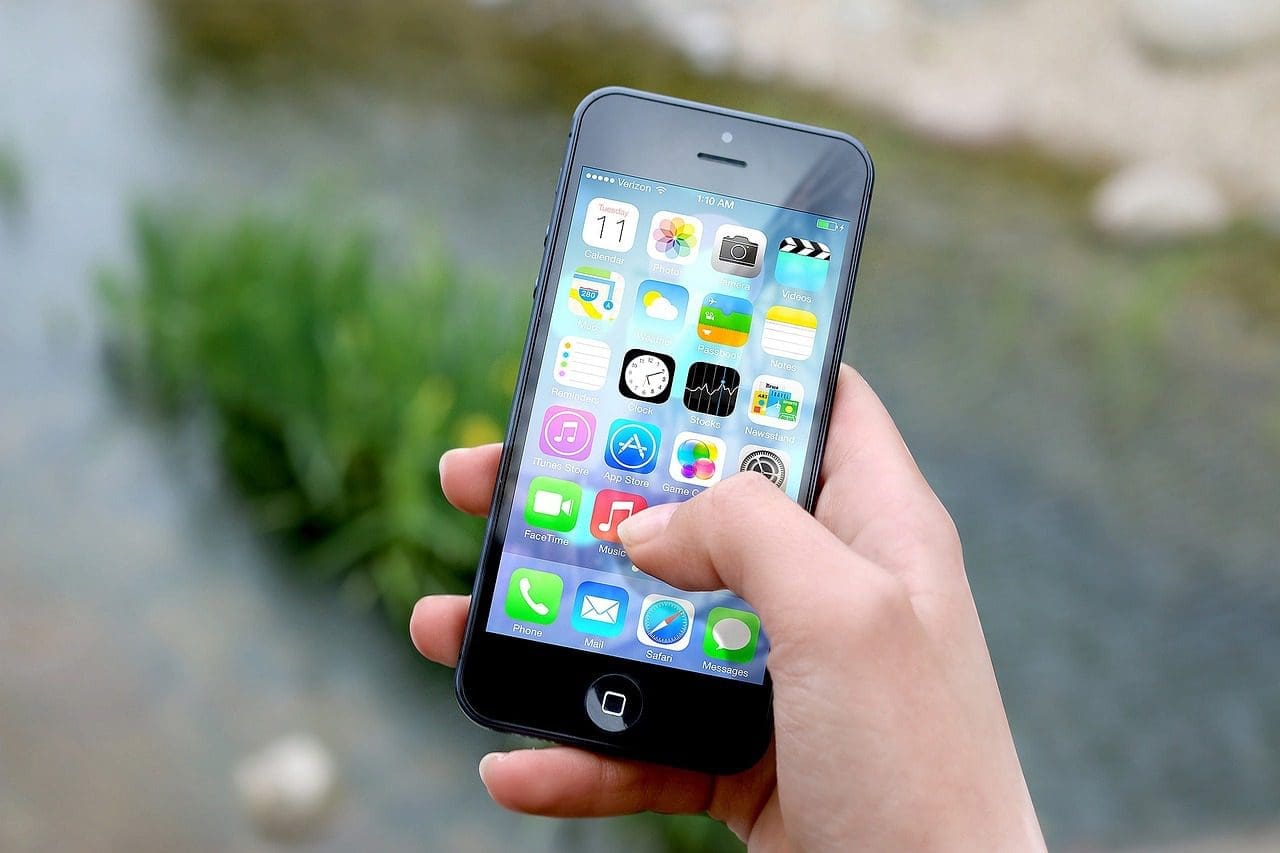Introduction to The Best Diet to Lose Weight Fast
Many people share a common desire to lose weight quickly. The role of diet in achieving rapid weight loss cannot be overstated. However, finding a diet that promotes fast weight loss and is safe and sustainable in the long run is essential.
Why Safety Matters
While rapid weight loss can be appealing, it is crucial to ensure your chosen approach is safe. Diets that drastically cut calories or eliminate entire food groups might yield quick results but can lead to nutrient deficiencies and other health issues.
Diets We’ll Cover
In this guide about the best diet to Lose weight fast, we will explore various diets and approaches aimed at fast weight loss:
- Very Low-Calorie Diets (VLCDs)
- Low-Calorie Diets (LCDs)
- Intermittent Fasting
- Time-Restricted Eating
Each method has its own benefits and considerations. Understanding them will empower you to make informed choices about the best diet for losing weight fast while maintaining your health.
For those on high-fat, low-carb diets like Keto, incorporating Keto Chocolate Smoothie recipes into your meal plan can make your diet more enjoyable and sustainable. These recipes are specifically designed for individuals following a high-fat, low-carb diet like Keto and can serve as a delicious meal option.
Additionally, if you’re considering the Keto diet, it’s important to understand the benefits of ketosis. Ketosis is a metabolic state in which the body uses fat as its primary source of fuel instead of carbohydrates. Exploring the benefits of ketosis will help you determine if this approach aligns with your goals.
Furthermore, we cannot ignore the impact of chemicals on our food supply. The side effects of chemicals in food have become a prevalent issue in today’s society. From pesticides and herbicides to preservatives and additives, these substances can have detrimental effects on our health. Understanding these side effects will enable you to make informed choices about the foods you consume.
Incorporating fitness exercises while on Keto can further enhance your weight loss journey. While the keto diet leads to significant weight loss and improved health markers, incorporating fitness exercises into this lifestyle can maximize its benefits.
For those on low-carb diets, finding the perfect low-carb sweetener is crucial. Many low-carb sweeteners have a minimal glycemic impact and can still satisfy your sweet tooth without derailing your diet.
Lastly, understanding how a BMI calculator works is essential when embarking on a weight loss journey. BMI stands for Body Mass Index and is based on body fat compared to height and weight measurements. Utilizing a BMI calculator can help you track your progress accurately.
Explore the specifics of the best diet to Lose weight fast in the sections that follow to find the best fit for your lifestyle and goals.

1. Very Low-Calorie Diets (VLCDs) and Low-Calorie Diets (LCDs)
What are VLCDs, and How Do They Promote Rapid Weight Loss?
A very low-calorie diet (VLCD) is a medically supervised eating plan designed to help individuals achieve rapid weight loss. Typically, these diets restrict daily caloric intake to between 800 and 1,200 calories. By drastically reducing calorie consumption, the body is forced to draw on its fat reserves for energy, leading to significant weight loss.
Potential Health Risks of VLCDs
While VLCDs can be effective for quick weight loss, they come with potential health risks:
- Nutritional Deficiencies: Extreme calorie restriction can lead to insufficient intake of essential nutrients.
- Muscle Loss: Without adequate protein, the body may break down muscle tissue for energy.
- Metabolism Slowdown: Prolonged low-calorie intake can slow metabolic rate, hindering future weight maintenance.
- Gallstones: Rapid weight loss increases the risk of developing gallstones.
To mitigate these risks, it’s crucial that VLCDs are followed under medical supervision.
Recommendations for Caloric Intake and Nutritional Adequacy in VLCDs
For those considering a very low-calorie diet, it’s essential to ensure nutritional adequacy even with restricted calories. Here are some recommendations:
- Daily Caloric Intake: Aim for 800-1,200 calories per day.
- Protein Intake: To preserve muscle mass, include high-quality protein sources like lean meats, fish, eggs, and plant-based proteins.
- Vitamins and Minerals: Incorporate a variety of fruits and vegetables within the calorie limit or consider supplements as advised by a healthcare provider.
- Hydration: Drink plenty of water to stay hydrated and support overall health.
Overview of Low-Calorie Diets (LCDs)
A low-calorie diet (LCD) is a less extreme approach compared to VLCDs but still promotes effective weight loss. Typically, an LCD involves consuming between 1,200 and 1,500 calories per day. This moderate restriction allows for more balanced nutrition while still creating a calorie deficit necessary for weight loss.
Benefits of LCDs:
- Easier to maintain over a longer period compared to VLCDs
- Reduced risk of nutritional deficiencies
- More flexibility in food choices
Recommended Caloric Restrictions for LCDs
Implementing an effective low-calorie best diet to Lose weight fast requires striking a balance between reducing caloric intake and meeting nutritional needs. Here are some guidelines:
- Daily Caloric Intake: Aim for 1,200-1,500 calories per day, depending on individual needs and activity levels.
- Diet Composition:Proteins: Ensure sufficient intake through lean meats, legumes, dairy products
- Fats: Focus on healthy fats like avocados, nuts, olive oil
- Carbohydrates: Prioritize complex carbs such as whole grains, fruits, vegetables
- Meal Planning Tips: Plan meals ahead to avoid impulsive eating
- Include a variety of nutrient-dense foods to cover all essential vitamins and minerals
- Opt for whole foods over processed snacks, which can add unnecessary calories without nutritional benefits
Balancing caloric intake while maintaining adequate nutrient levels ensures that both VLCDs and LCDs can be implemented safely.

2. Harnessing the Power of Intermittent Fasting and Time-Restricted Eating for Weight Loss
Understanding Intermittent Fasting
Intermittent fasting is an eating pattern that cycles between periods of fasting and eating. It doesn’t prescribe specific foods but focuses on when you should eat them. This approach can facilitate weight loss by altering hormone levels and promoting calorie restriction.
How It Works:
- Hormone Regulation: Insulin levels drop significantly during fasting, facilitating fat burning. Simultaneously, growth hormone levels increase, aiding muscle gain and fat loss.
- Calorie Restriction: By limiting the eating window, intermittent fasting naturally reduces overall calorie intake without deliberate effort.
Popular Methods of Intermittent Fasting
There are various intermittent fasting methods, each with unique eating patterns and potential effectiveness:
16/8 Protocol
This method involves 16 hours of fasting followed by an 8-hour eating window. For example, you might eat between 12 PM to 8 PM and fast from 8 PM to 12 PM the next day.
Key Benefits:
- Easier to adhere to as it aligns with typical meal times.
- Promotes consistent calorie deficit while allowing substantial meals within the eating window.
Alternate-Day Fasting
Alternate-day fasting involves alternating between a day of normal eating and a day of reduced calorie intake (around 500 calories).
Key Benefits:
- Significant calorie reduction over time.
- It may be more sustainable for some individuals compared to continuous daily fasting.
The Role of Time-Restricted Eating in Weight Management
Time-restricted eating (TRE) narrows the daily eating period to a specific timeframe, usually aligning with the body’s circadian rhythm. Typically, this means consuming all meals within an 8-12 hour window during daylight hours.
Benefits of TRE:
- Improved Metabolic Health: Aligning food intake with the body’s natural rhythms can enhance metabolic processes.
- Weight Management: Reduces late-night snacking and mindless eating, contributing to weight control.
- Digestive Health: Provides the digestive system ample time to rest and recover.
Incorporating Healthy Meal Replacements into Intermittent Fasting
Meal replacements can simplify intermittent fasting routines by ensuring balanced nutrition and convenience.
Tips for Healthy Meal Replacements:
- Nutrient-Dense Options: Choose options rich in protein, fiber, vitamins, and minerals to keep you full longer and support overall health.
- Smoothies: Consider nutrient-packed smoothies that are easy to prepare and customize according to your dietary needs. Explore the benefits of incorporating a smoothie diet into your intermittent fasting routine.
- Pre-Packaged Shakes: Opt for high-quality pre-packaged shakes designed for meal replacement, ensuring they are low in added sugars and artificial ingredients.
Incorporating these strategies into your intermittent fasting routine can help maintain a balanced diet while promoting effective weight loss. For more insights on diet benefits, unveil them here.
Maintaining a focus on nutrient-rich foods ensures sustained energy levels during fasting periods, supporting both short-term weight loss goals and long-term health benefits. Transitioning smoothly from restrictive diets like Very Low-Calorie

3. Nurturing Your Body with Nutrient-Dense Foods
The Importance of Nutritious Eating for Weight Loss
Maintaining a diet rich in nutrient-dense foods is crucial for both quick and sustainable weight loss. Nutritious eating ensures that your body receives the necessary vitamins, minerals, and other nutrients it needs to function optimally. A balanced diet can:
- Boost energy levels
- Improve overall health
- Enhance mental clarity
- Support muscle growth and repair
Focusing on nutrient-dense foods creates a strong foundation for achieving your weight loss goals without compromising your health.
Metabolism: Myths and Facts
Metabolism plays a crucial role in weight loss, influencing how your body burns calories. However, there are many myths surrounding metabolism:
- Myth: Fast metabolism means you can eat anything without gaining weight.
- Fact: While some people have naturally faster metabolisms, everyone must balance calorie intake with physical activity.
- Myth: Eating late at night slows down metabolism.
- Fact: Total daily calorie intake and expenditure matter more than meal timing.
Understanding these facts helps you make informed choices about your diet and activities.
The Concept of ‘Calories In, Calories Out’
The principle of ‘calories in, calories out’ (CICO) is fundamental to weight loss. This concept revolves around creating a calorie deficit, where you consume fewer calories than your body needs to maintain its current weight.
Key Points:
- Calorie Deficit: Aim for a daily deficit of 500-1000 calories to lose weight.
- Exercise: Incorporating physical activity can help increase your calorie burn.
- Tracking: Use apps or journals to monitor your intake and expenditure.
Remember, the quality of calories also matters; prioritize nutrient-dense foods over empty-calorie options.
Cutting Calories Without Compromising Nutrition
Reducing calorie intake doesn’t mean sacrificing essential nutrients. Here are strategies to cut calories while maintaining nutritional adequacy:
- Prioritize Whole Foods: Choose fruits, vegetables, lean proteins, and whole grains over processed snacks.
- Portion Control: Be mindful of portion sizes to avoid overeating.
- Healthy Swaps: Replace high-calorie ingredients with lower-calorie alternatives (e.g., Greek yogurt instead of sour cream).
- Hydration: Drink water before meals to help control appetite.
These tips help ensure you’re getting the nutrients you need while working towards your weight loss goals.
Building a Healthy Eating Plan
A well-rounded eating plan includes adequate protein sources, unsaturated fats, and fiber-rich foods:
Protein Sources
Protein is vital for muscle repair and satiety:
- Lean meats (chicken breast, turkey)
- Plant-based proteins (beans, lentils)
Unsaturated Fats
Healthy fats support brain function and hormone production:
- Avocados
- Nuts and seeds
- Olive oil
Fiber-Rich Foods
Fiber aids digestion and keeps you feeling full longer:
- Vegetables (broccoli, spinach)
- Fruits (berries, apples)
- Whole grains (oats, quinoa)
Creating a balanced meal plan that incorporates these elements can help you achieve lasting weight loss while supporting overall health.
4. Sustaining Weight Loss Results Through Lifestyle Factors
The Crucial Role of Long-Term Lifestyle Changes
Achieving weight loss is just one part of the journey; maintaining it requires long-term lifestyle changes. One key factor in this process is regular physical activity. Exercise helps burn calories and boosts your metabolism, making it easier to sustain weight loss. Activities like walking, jogging, swimming, or even dancing can be enjoyable ways to stay active.
- Regular exercise helps improve cardiovascular health
- Strength training builds muscle mass, which increases basal metabolic rate
- Incorporating variety in workouts prevents boredom and keeps you engaged
Staying Motivated on Your Weight Loss Journey
Staying motivated during the ups and downs of a weight loss journey can be challenging. Setting realistic goals and seeking support from friends, family, or a community can make a significant difference. For teenagers looking to lose weight, it’s important to note that their bodies are still developing and may require specific guidance tailored to their needs. The CDC and the NIH offer valuable resources for teenagers aiming for weight management.
Practical Tips for Staying Motivated:
- Set Realistic Goals: Break down your ultimate goal into smaller, manageable milestones.
- Track Your Progress: Use a journal or an app to monitor your achievements and setbacks.
- Celebrate Small Wins: Reward yourself for reaching mini-goals with non-food treats.
- Seek Support: Join a support group or find a workout buddy to stay accountable.
- Stay Positive: Focus on the benefits you’re gaining rather than your sacrifices.
The Often Overlooked Role of Quality Sleep
Quality sleep plays a crucial role in weight management, yet it’s often overlooked. Poor sleep can disrupt hormones that regulate hunger and appetite, leading to increased cravings and potential weight gain.
Prioritizing Healthy Sleep Habits:
- Establish a Routine: Go to bed and wake up at the same time every day.
- Create a Sleep-Friendly Environment: Keep your bedroom dark, cool, and quiet.
- Limit Screen Time Before Bed: Reduce exposure to blue light from phones and computers.
- Practice Relaxation Techniques: Consider meditation or reading to unwind before bedtime.
- Avoid Stimulants: Limit caffeine and alcohol intake in the evening.
By focusing on long-term lifestyle changes such as regular physical activity, staying motivated through support systems (especially for teenagers who can benefit from tailored resources), and prioritizing quality sleep, you can maintain your weight loss success effectively.
Seek Professional Guidance and Listen to Your Body
Consult with a Healthcare Professional
Beginning any best diet to Lose weight fast, especially extreme diets or fasting regimens, requires careful consideration. Professional guidance from a healthcare provider or registered dietitian is crucial. These experts can:
- Assess your individual health needs.
- Tailor dietary recommendations to fit your lifestyle.
- Monitor your progress and make necessary adjustments.
An individualized approach ensures that your weight loss plan is effective and safe.
Heed Your Body’s Signals
Listening to your body’s needs is paramount. Rapid weight loss should never come at the expense of overall well-being. Sustainable and gradual weight loss is the key to long-term health.
Incorporate these practices into your routine for a balanced approach to weight management:
- Regularly consult with professionals.
- Stay attuned to how your body responds to dietary changes.
- Prioritize well-being over speed in achieving weight loss goals.
Remember:Your body knows best. Pay attention to signals like fatigue, hunger, and emotional changes.
Integrating professional advice and listening to your body’s cues enables you to navigate your weight loss journey effectively and safely.
Conclusion
Achieving your weight loss goals quickly and safely is a delicate balance. Rapid weight loss can offer benefits, especially for certain health conditions, but adopting a method that prioritizes your overall well-being is crucial. Combining elements from Very Low-Calorie Diets (VLCDs), Low-Calorie Diets (LCDs), Intermittent Fasting, and Time-Restricted Eating under professional supervision ensures a balanced approach.
Key Takeaways:
- Speed and Safety: Rapid weight loss methods can be effective but should always be approached with caution.
- Professional Guidance: Consulting healthcare professionals or registered dietitians can provide individualized guidance.
- Combining Methods: Integrating various diets can yield better results when done correctly.
Resources for Your Journey:
- Discover the ultimate Instant Pot Keto Bone Broth Recipe, a nourishing and flavorful diet staple that enhances your weight loss journey.
- Find out if you can have a Smoothie or Juice Diet while on Keto with valuable tips and considerations.
- Learn about men’s unique challenges in their weight loss journey and explore strategies with our insights on No Weight Loss Plan for Men.
Prioritize a diet plan that suits your lifestyle and body’s needs. Gradual yet consistent efforts pave the way for sustainable weight loss, ensuring long-term health and vitality.
FAQs (Frequently Asked Questions)
What are Very Low-Calorie Diets (VLCDs), and how do they promote rapid weight loss?
VLCDs are diets severely restricting calorie intake, typically 800 calories or less per day. They promote rapid weight loss by creating a significant calorie deficit, forcing the body to use stored fat for energy.
What potential health risks are associated with Very Low-Calorie Diets (VLCDs)?
Some potential health risks of VLCDs include nutrient deficiencies, gallstones, heart problems, and fatigue. It’s important to consult with a healthcare professional before starting a VLCD.
What is the recommended caloric intake for Very Low-Calorie Diets (VLCDs), and how can nutritional adequacy be ensured?
The recommended caloric intake for VLCDs is usually around 800 calories per day. To ensure nutritional adequacy, it’s crucial to incorporate nutrient-dense foods and possibly take dietary supplements under the guidance of a healthcare professional.
What is the difference between Very Low-Calorie Diets (VLCDs) and Low-Calorie Diets (LCDs)?
VLCDs severely restrict calorie intake to promote rapid weight loss, typically providing 800 calories or less per day. On the other hand, LCDs are less extreme and generally provide more calories while still promoting weight loss through a calorie deficit.
How can one strike a balance between weight loss and nutrient needs on a Low-Calorie Diet (LCD)?
To strike a balance on an LCD, focusing on nutrient-dense foods, prioritizing whole foods over processed snacks, and possibly consulting with a registered dietitian to create a well-rounded meal plan is important.
How does intermittent fasting facilitate weight loss?
Intermittent fasting facilitates weight loss by inducing changes in hormone levels and promoting calorie restriction. This can lead to increased fat-burning and improved metabolic health.









Be First to Comment